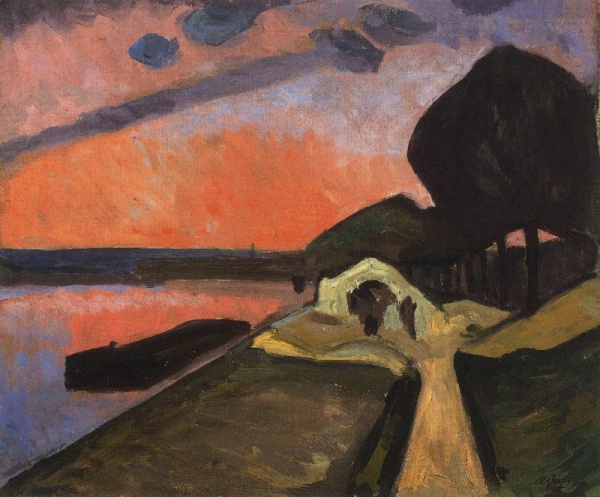Facts About Bords de la Marne
"Bords de la Marne" also known as "Les Bords de la Marne" or "The Banks of the Marne" is a remarkable work by French artist Albert Gleizes, painted in 1909. This oil on canvas exemplifies Gleizes' proto-Cubist period, during which he began to depart from traditional representations and embraced geometric abstraction.
In this phase, Gleizes focused on simplifying forms and emphasizing structural rhythms in his art. He experimented with interlocking angles and rectangles, employing a rose-toned palette to flatten depth and generate a more abstract sensation. Influenced by Paul Cézanne, Gleizes aimed to present a synthesized view of the world, skillfully weaving together concepts of space, time, and diversity.
Between 1905 and 1909, Gleizes' style underwent significant evolution. He adopted a bolder approach with simpler color schemes and brushwork, reflecting a more synthetic vision of reality. His work from this period echoes the ideals found in the poetry of the Abbaye de Créteil, a literary and artistic community with which he was affiliated.
Gleizes found kindred spirits in artists such as Henri Le Fauconnier and Jean Metzinger, who shared his interest in innovative artistic expressions. Together, they formed a group under the guidance of Alexandre Mercereau in 1909 and 1910. This collective focused on the ideals of simultaneity and synthesis, which were pivotal in the development of Cubism.
Gleizes' transition towards abstraction marked a significant transformation in his work. Shifting away from traditional epic themes, he began to explore modern concepts like speed, action, and the interplay between modernity and tradition. His art sought to break free from conventional allegorical representations, offering a novel perspective with multiple viewpoints and dimensions of time.
In "Bords de la Marne" Gleizes abandons traditional representation in favor of a geometric and concrete interpretation of the scene. The painting presents a complex panorama, exploring the relationships between volumes and the ever-changing landscape. Gleizes challenges viewers with a dynamic interplay of actions, places, and times, providing a unique and multifaceted perspective on the world.

 Italy
Italy